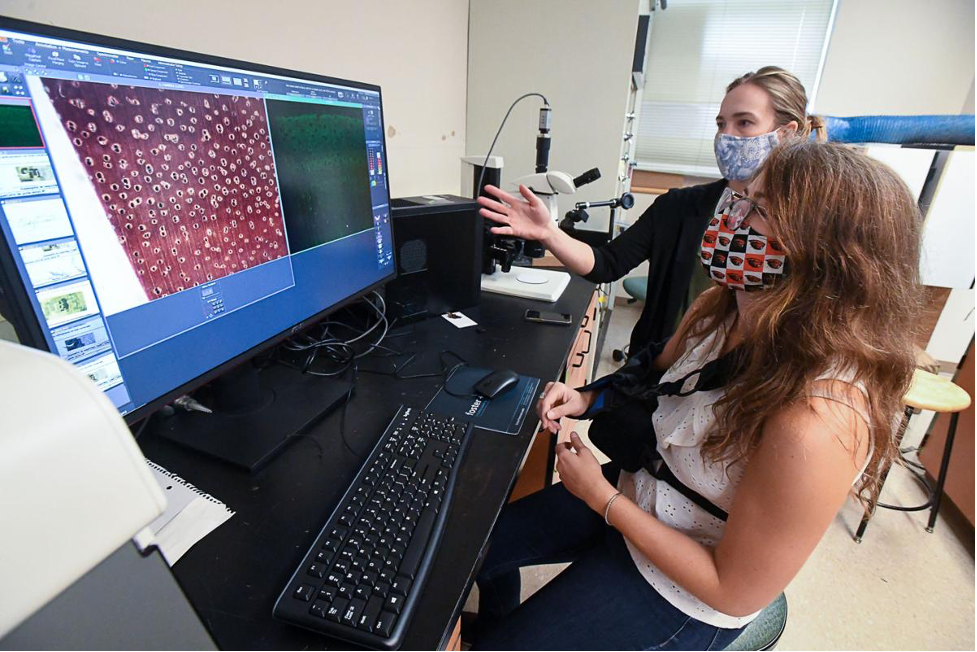
WISC scientists Dr. Cady Lancaster (right) and Dr. Kristen Finch (left) look at high resolution wood images in the new WISC lab at Oregon State University. Photo by Andy Cripe of Mid-Valley Media.
The US Forest Service International Programs Wood Identification & Screening Center, WISC, has opened new facilities at Oregon State University and expanded its team of scientists. The team of four, now embedded within OSU’s College of Forestry, offer wood species identification services to various US government agencies. From guitars to furniture, WISC can confirm what type of timber was used, exposing potential Lacey Act violations. By partnering with OSU, WISC is pursuing research collaborations and student engagement opportunities in one of the world’s premier colleges of forestry. In addition to investing in the next generation of scientists, WISC will host international visitors for short and long-term trainings on wood identification to expand global use of improved wood ID technologies and ultimately provide greater enforcement of international laws against illegal timber trafficking.
Located in heart of the Pacific Northwest’s timber industry, WISC will partner with private sector companies to verify their supply chains and support other critical wood identification needs. To better meet law enforcement needs, such as developing methods to identify more complex wood products in trade, WISC is continuing research on origin authentication methodologies that verify where timber was harvested. WISC uses a chemical method called Direct Analysis in Real-Time Time-of-Flight Mass Spectrometry, or DART-TOFMS. In this technique, small slivers of wood are analyzed to create a chemical profile, as distinct as a human fingerprint, that can identify wood to the species and in some cases even down to the population level. These chemical profiles are stored in a digital form as the Forensic Spectra of Trees (ForeST) Database. Using wood samples from existing wood collections as well as newly collected samples from global partners, WISC can expand the number of species in the ForeST database so that all DART-TOFMS users around the world can accurately identify globally traded wood species.
WISC Director Dr. Beth Lebow summarized their ambition: “By being a service provider, trainer, and developer of wood ID methods that better meet law enforcement needs, WISC is helping the US and other countries use wood identification to verify the legality of wood products in trade. This ultimately helps combat global illegal logging and supports the viability and competitiveness of legitimate forest products.”